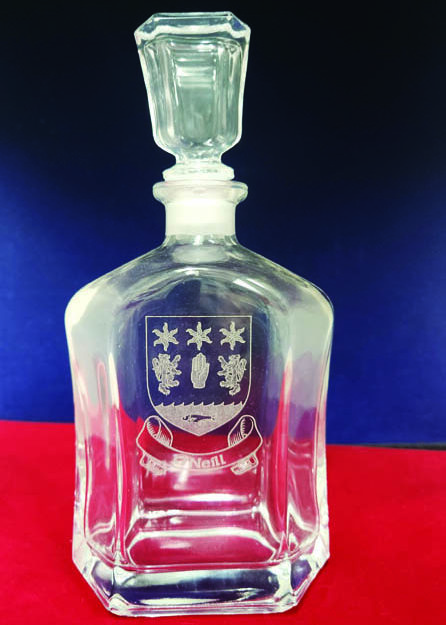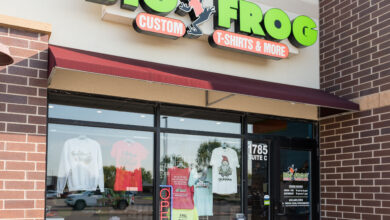
Diversifying your product offering across a wide range of customers is of course a good idea. Becoming too dependent on one source of revenue can add a vulnerability to your business. At the same time, one way to insulate your business is to create a niche market that can become an “anchor” for you.
A niche market is the subset of the market on which a specific product is focused. The market niche defines the product features aimed at satisfying specific market needs as well as the price range, production quality, and the demographics that it is intended to target. It is also a small market segment … blah, blah, blah. That’s a definition from some business school text. Simply put, find something in your community that you can provide that makes you, if not indispensable, then at least the first and easiest choice for your customers. The beauty of creating a niche is that you can then go beyond your community and look elsewhere for the customers your “special product” will appeal to.
I was very fortunate when I started off in that I already had a niche to work with. I should also add that at this time I was interested in little more than a means to generate some extra revenue from my garage, not setting up a business. Through family connections I was introduced to heraldry. My brother in-law had an embroidery business providing his customers with heraldic items.
After experimenting with my system to the point I felt comfortable with my products, I started to supply my brother-in-law with engraved items for his shop. My next step was to deliver some products to a friend who also had a specialty gift shop. I had engraved some items. I went over to his store, gave them to him and said, “If you’re interested in selling these you can use them as samples. If you’re not then you just got an early Christmas present!”
Very quickly, then, I had my niche market and, at the same time, had entered into the world of wholesale. From there my wife and I were invited to help my friend at some of the various festivals and fairs he participated in, selling our new product line through his shop. A couple of years passed and my wife and I made a career change and opened up our own gift shop and integrated heraldic engraved products into the store. That of course added a second “niche” market — Celtic artwork.
Before going any further, I admit that we were very lucky in how we got into the business. That being said, I think the most important point is that even after you have worked to create your specialty, the next step is for you to introduce your products to potential customers. At this stage, you don’t need to restrict yourself to your locality. If you can find a wholesale outlet, great! If you’re not looking to get into the wholesale market, then add your products to your website. If you don’t have a website, look into some form of online presence. Get yourself into the position in which your customers are looking for you, and not the other way round.
During all this, of course, you will need to develop a library of appropriate graphics. This can be done almost one job at a time if there is no existing library you can use. Once you have a graphic you can use, save it for future use. There are several good sources online you can subscribe to that will offer lots of graphics.
Creating your niche may not mean that you create a specialty product. It may mean that with the use of creative pricing and pricing methods, combined with dependable delivery times, your customers will realize that you offer the best deal around. You create your niche by not necessarily introducing new products, but by introducing potential customers to the process and service.
 Given the context of some of my previous articles, the following may seem like heresy. The creation of a specialty product can open up your business to offering your specialty products using different mediums. For example, a graphic you produced could be used to develop embroidered, printed, or woven products. Laser engraving produces images in various shades from white to black. Of course, as you develop your skill manipulating graphics and modifying your machine settings, you also improve your ability to produce good contrast within this restriction. However, by trying out different processes you can introduce color to your product range. You’ve now expanded your product and introduced it to a whole new group of potential customers.
Given the context of some of my previous articles, the following may seem like heresy. The creation of a specialty product can open up your business to offering your specialty products using different mediums. For example, a graphic you produced could be used to develop embroidered, printed, or woven products. Laser engraving produces images in various shades from white to black. Of course, as you develop your skill manipulating graphics and modifying your machine settings, you also improve your ability to produce good contrast within this restriction. However, by trying out different processes you can introduce color to your product range. You’ve now expanded your product and introduced it to a whole new group of potential customers.
Another benefit of a specialty item is that it can offer you additional sales methods. I referred briefly to our participation in festivals and fairs. Local arts and crafts fairs, community festivals — even county fairs if you’re ambitious enough. As with any other aspect of your business, it’s easy to get carried away when you receive a number of good orders so remember to keep in mind that you have to deliver product. Make sure you have a reasonable inventory of materials and dependable suppliers if you run out.
There is one big disadvantage in developing a niche product. By definition, you have a self-limiting customer base. Only so many people will buy so many pieces of similar items. It’s essential that you are constantly looking to expand your customer base — either wholesale or retail and hopefully both. Continue to look into different materials or mediums to work with.






